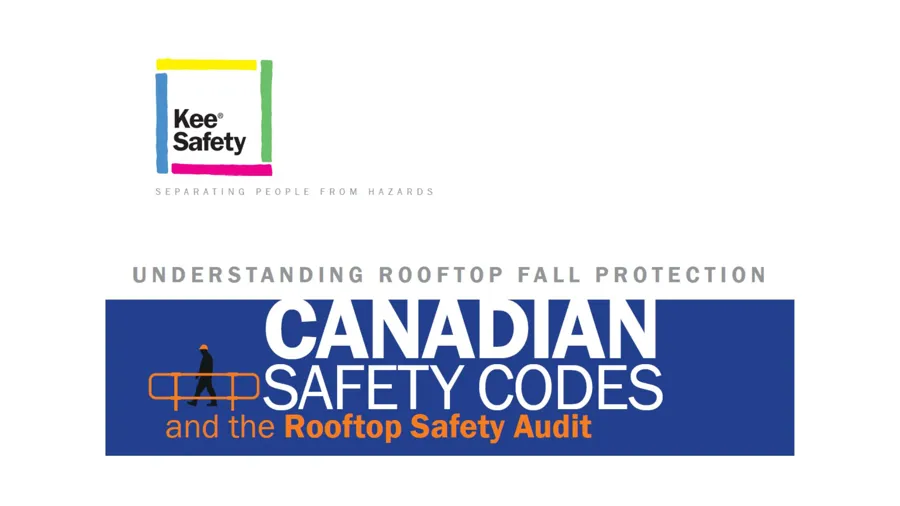
You are visiting the Canada Kee Safety website from United States. Would you like to go to the United States site?

CEOs are on the top of organizational hierarchies, but it’s rare to find them on a rooftop. Instead, that’s where your maintenance workers service HVAC and other equipment. That’s where third-party contractors may come in for new construction, erect signage, or replace old equipment. And you never know, a government safety inspector might be on your roof.
To protect those who work at heights, the CEO and others in an organization need to embrace a sound, strategic approach to risk mitigation known as the Hierarchy of Fall Protection. There are four tiers in this hierarchy used to evaluate and protect people from hazards.
The best solution is to is eliminate the danger and any possibility of a fall. That is easy to say. If there is no cause for anyone to be on the roof, and there is no access to the roof, then “done.”
In real life, though, removing the hazard is often impossible or costly and impractical—like renting a cherry picker to have someone change an air filter. If people must access the roof, then there needs to be one or more forms of fall protection.
This is fall protection that protects everyone “collectively.” The most common example is a perimeter safety railing system. For workers accessing the roof, a compliant railing system requires no special equipment, no training, and not even a second thought. The protection is just there, which is why it is also known as “passive fall protection.”
Although the roof edge presents the most obvious danger, other hazards on the roof need collective attention. Falls through roof egress hatches and skylights can be avoided with railings and skylight screens. Exposed piping, a change in roof levels, and other obstructions can be safely traversed with “crossovers,” a simple stepped platform with handrails.
Confined spaces and steep slopes can present areas where a collective system cannot protect workers. In such cases, an “active” fall protection method is needed for each worker. “Tie-off” is a common term for these types of systems, such as retracting lifelines and harnesses and lanyards with anchor points.
Work restraint equipment is designed to prevent workers from reaching the roof edge and typically withstands at least 1360 kg of force. Employees must be properly fitted and trained to use their protective gear. The equipment should be inspected before and after every use.
When workers need to reach an unprotected roof edge, a fall arrest system interrupts the fall within an acceptable distance and force. The same personal protective equipment employed for work restraint is used for fall arrest, though a net to catch a worker might be set up. (This may sound like fun, but it can be terrifying.)
If a fall occurs, there are drawbacks to fall arrest that can result in injury or death.
Since any of the above are possible, there must also be a rescue plan to help workers who have suffered from a fall. Minutes, even seconds, matter, especially if the worker is hurt, unconscious, or panicking.
At the top of the Hierarchy of Fall Protection, the best solution is to eliminate the hazard. If that is not possible or practical, then collective fall protection and fall restraint systems are strong measures to help keep workers safe. Fall arrest has risks; however, it is better than having no fall protection in place.
In the hierarchy of a company, it does not take the CEO to address fall protection. Managers and other employees can find out more about regulatory standards. They can call in experts to evaluate their rooftop hazards and vulnerabilities. They can research the products, systems, and suppliers of fall protection solutions.

What experts look for when performing a rooftop safety audit and how to improve worker safety with solutions that exceed OH&S compliance.